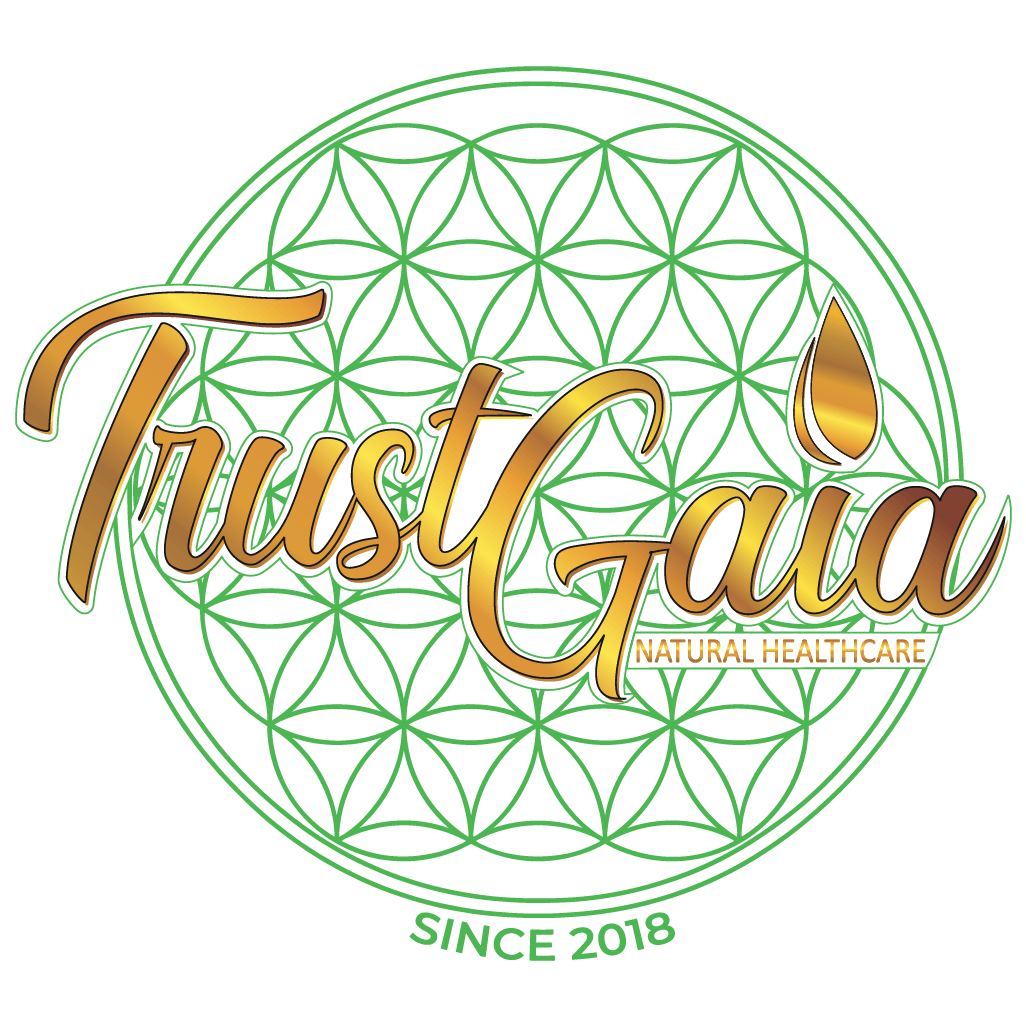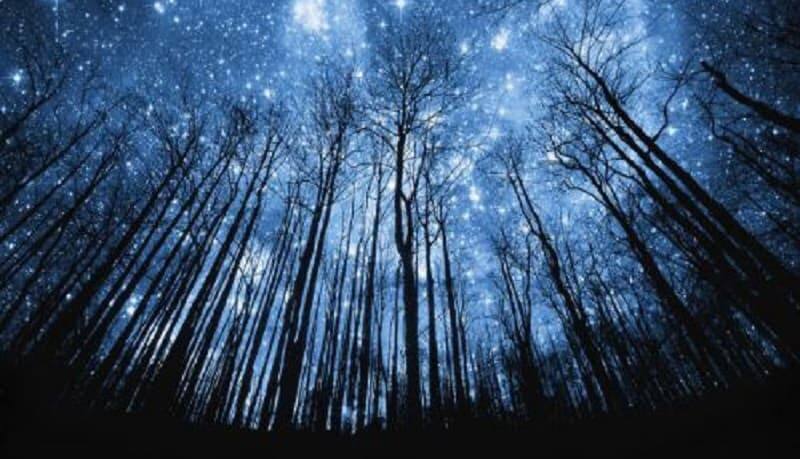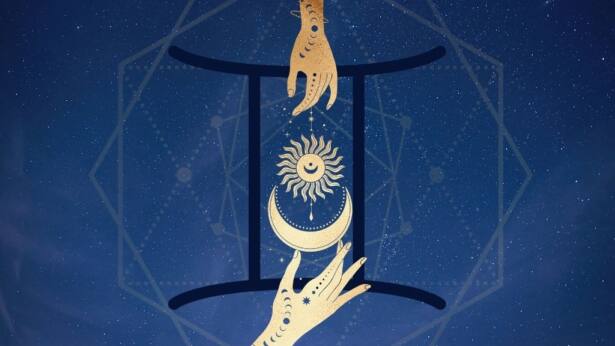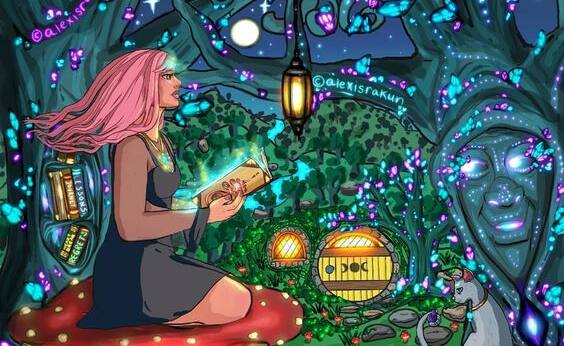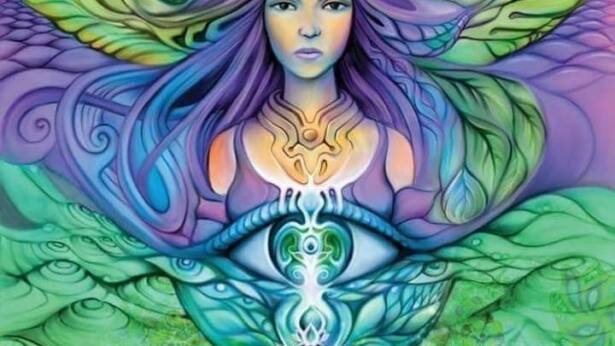What is the solstice? It is an astronomical event caused by the tilt of the earth on its axis and its orbit around the sun. The result in the Northern Hemisphere is the longest night and the shortest day. In ancient times, the winter solstice marked the midpoint of winter, but in modern times, it represents the first day of winter.
The winter solstice has been the inspiration of many ceremonies since man first realized the significance of the event. As ancient humans noticed the shortening of the days, they perhaps also harbored the fear that perhaps the sun might not return. They, therefore, observed the day in various ways to entice it back.
Then soon the winter solstice approaches in only 2 days ..
The turning point where the light is born out of the winter darkness on the longest night.
At winter solstice, the sun is born of the womb of darkness.
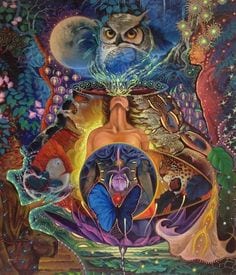
An essential part of shamanic work is the cycle of the wheel of the year.
Therefore, this feast is often called a feast of lights, but winter solstice is also a thanksgiving to the winter darkness, to the Dark Mother.
At every season, our mother nature brings a different energy, learning wisdom to us.
Each season invites and welcomes us to different focus areas in our lives and thus shamanistic practices.
Mother Nature’s power and enchantment is at its highest at any solar eclipse and equinox, so because of this, it is therefore particularly powerful to perform ceremonies and immerse oneself in the nature of spiritual work at these times.
¨If you want to learn more about shamanic work, you are welcome to join our retreats when they start again in the new year, you can read more about this on our page¨ —>
This year’s cycle is a mysterious tale about the duality between the feminine and masculine principle in nature, between the great mother and father, also called the goddess and the god.
It all starts at winter solstice where the goddess gives birth to the god – the light is born out of the darkness. The god grows slowly in his strength until the vernal equinox, when the light triumphs the darkness.
The god has matured and can meet the goddess in love and fusion in the spring. Their meeting bears fruit and the Goddess becomes pregnant with new life.
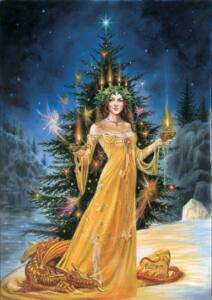
At summer solstice, the power of the god is at its highest with the many bright hours of the day.
When autumn comes, he begins to languish and descends to the realm of the dead at the autumnal equinox – where darkness triumphs the light. To then be born again at the winter solstice of the pregnant goddess.
Winter solstice 21 or 22 December depending on where you are in the world
This is the beginning of the year. New Year’s New Year. It is the transition from the old to the new. We say goodbye and thank you for the year that has passed and welcome the new year.
Winter solstice is not just about celebrating the coming of light, also means a tribute to the Dark Mother, who is the womb, life-giver and protector of all species.
When we let go of the notion of ¨darkness ¨ as something dangerous and demonized and instead return to an ancient wisdom that is that darkness is part of the feminine force, then we gain an invaluable knowledge to create a life in balance.
In the dark winter embrace of the earth, which lies the seed and rests. Protected in the womb of the mother earth. Here it can linger until the time is ripe for germination and creation.
surrounded by the mantle of darkness, there we find peace and being. We have the opportunity to be held and sink into the embrace of darkness. Feel the inner seeds that are lying and ripening. We are helped to recover and heal in the embrace of darkness.
All these vital qualities that the Dark Mother carries, have for centuries been demonized by religions that feared the powerful feminine primordial force – ruler of life, death and transformation. Later came the industrial society that does not leave time or space to lean into winter darkness, immersion, slowness or recovery, but expects that we can and must perform at the same level all year round. This results in, among other things, winter depression and burnout.
Therefore, let us all at the winter solstice again create space for the wisdom of winter and welcome the Dark Mother -The part that is about contemplation and restitution. Let us make room for darkness, for the silence and clarity of winter – and accept her invitation to find inner peace and reflection on the previous year. It is through her that the light is born. So let both darkness and light be a part of your winter solstice celebration.
Winter solstice is an enlightened time in which the separation between arteries and kingdoms is lifted for a while. And therefore a good time to take notice of the new year. To sit in the dark and talk to the forest and all its creatures and to its spirit helpers. Both about the year that passed, the gifts and blessings we received but also about the challenges and the learning it gave us. And if they wish we have for the new year.
Yule, –
Before Christianity celebrated Yule together with the winter solstice, Yule is a birthday party for the sun, the feast of light. The solstice party is about the desire for fertility and peace in the new year. Originally, Solstice, Yule and New Year were one and the same party.
The little people, as we today call dwarfs and elves, have a special role at Christmas. They provide balance and health in homes and gardens, so remember to sacrifice for them during this time.
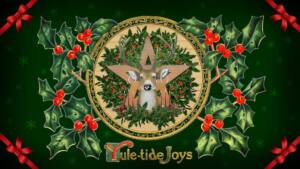
Winter solstice ceremony.
It is powerful to go out into nature and make a solstice celebration and ceremony. This can be done both alone and with others. The reason why it is rewarding to work with ceremony and celebration in nature is that the day’s particularly strong energy is best felt by being close to nature and its creatures. You can and also work in a garden or indoors, then feel free to invite the nature creatures into your home
The ceremony is built and arranged around the special themes of the winter solstice and the needs of the group. After the ceremony, it is nice to celebrate with a bonfire, good food and drink, singing, music, storytelling, etc.
Below is an inspiration for a ceremony that I learned about from a shaman I attended a course with. You can do this ceremony both alone or with other like-minded people.
Inspiration for winter solstice ceremony
1. Preparation: Start by finding an undisturbed place in nature with good energy. If possible, light a fire and prepare an altar / powerhouse.
2. sit in silence and calm for a while to get completely into peace and being.
3. Invitation Ritual: Start the ceremony by cleansing with holy herbs, e.g. sage, juniper or lavender. Then call on the forces, energies and spirit helpers who you want to assist you in the work. It can be done through prayer, power singing and drumming.
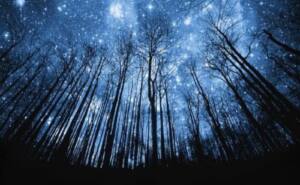
4. Saying goodbye to the old: The first part of the ceremony is about saying goodbye to the old and possibly.
5. Be in the dark: When everyone has finished saying goodbye to what they want, sit still for a while and feel
how there has been more space inside you and you can feel more free. Find in gratitude and feel your grounding. Let the fire go out in embers so that you can initiate the winter darkness into the circle. Let yourself be embraced by the Dark Mother and allow yourself for a while just to be, rest and receive deep healing of nature and the earth.drop something that no longer serves you. Write down the things you want to say goodbye to and let go of (one thing per note. Burn them then, one at a time while visualizing energetically how to give the old to the fire that transforms it. Maybe you also feel like to move your body, shout, cry or sing it into the fire to let it go. Just let go and get rid of it! Other times, saying goodbye to something can be a quiet process carried by gratitude. in one group, this is done one at a time, while the rest of the group simply backs up with quiet presence.
6. Sacrifice: then go out into the woods and make a sacrifice to the creatures, the little people and all your helpers, to the darkness and to the light. Give your sacrifice in gratitude for all that has been given to you in the past year and ask for help and guidance for your new life chapter. The offering can e.g. be organic bird seeds and apples.
7. Skip the fire: A glorious and life-giving tradition, where you jump over the fire and clearly announce your wishes for the new year – both for yourself and for the community. It can be, for example, ¨I jump for a healthy health, ¨I jump for unconditional love, ¨I jump for greater clarity about my life¨, ¨I jump for healing of Mother Earth ¨M.m. This is both fun and energizing to do in a circle where everyone in turn jumps over the fire and loudly declares what they want to manifest in their lives! The rest of the group can cheer and clap to show their support and backing.
8. Finish by: standing in a circle of gratitude with each other in your hands. After the ceremony, it’s time for celebration and fun around the fire, to dish up goodies, drum, sing or tell stories
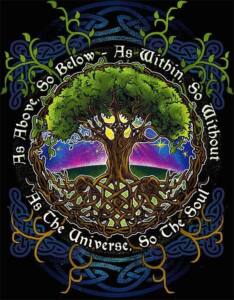
“Winter Solstice triggers a time in which the Inner Light is kindled in spite of outer darkness.
On the Medicine Wheel, the Winter Solstice (and the Summer Solstice) ride the cross winds of the
Wheel. These cross winds are like a pause that brings change – a change in Nature that we feel in our bodies. this pause, it feels like the top or bottom of a full breath. This time between the inhale or the exhale is about change.is a time to give birth to and awaken the higher self. Spiritual impulse is born anew within us, adding light and strengthening the love principle within our life.” Ted Andrews
Solstices are opportune times to bring completion of what has gone before and to fix intentions for what will come as we plant the seeds that seem to be dormant but are gathering strength to push through the soil in the Spring. The Winter Solstice is the time to go within and sort out the intentions of what we want to bring forward. On the Medicine Wheel, the north winds encourage patience and inward growth, a renewal of the mind and body. The north winds assist to establish intent and purpose for the seeds for the coming New Year such as abundance, prosperity, love and illumination.
From another perspective, numerology belief sees the new year beginning on the Winter Solstice, December 21. The reason the new year begins on the Winter Solstice is because it is the return of the light. The return of the light cleanses the soul and the soul prepares for the new year. This perspective is very Earth based and yet it comes from the world of numerology. Interesting.
Ceremony’s like the one mentioned before can be a way to bring the specialness of the Soltices and Equinoxes to our hearts and minds. Ceremony is a way for us to sift through our thoughts and feelings to clearly see our intentions. Ceremony is the bringing together of the Human and Divine through the act of prayer. I suppose we could also say that ceremony is a way to bring together the mental mind and the emotions of the heart, balance. Since the Winter Solstice is about the return of the Light, many people celebrate by using fire at their ceremony.
How The Ancients Celebrated The Winter Solstice :
It is the time for the Holly King (the king of darkness) to do battle with the Oak King (king of lightness) once again. This happens twice every year. At the summer solstice (around June 21—the longest day and the shortest night) the days begin to shorten and the Holly King defeats the Oak King and reigns supreme in the dark times (or days getting shorter). But in December, following the winter solstice, the days begin to lengthen and the Oak King conquers the Holly King and reigns during the light times.
Wild Foods:
To honor the Oak King, some of our ancestors would include acorn muffins, cakes, or breads in the evening feasts. (The process of making acorn flour is long, but rewarding.)
Bonfires:
Many traditions included a bonfire as an offering of light and fire and an appeal to the sun to warm the earth once again. Some traditions lead to contemplation of the past year, and throwing something into the fire that symbolized a habit one wanted to rid themselves of. (A modern version would be throwing in a cookie and asking to lose a few pounds!) One might throw something into the fire they would like to improve on during the upcoming year. (Now, perhaps you could throw in a single seed of plants you would like to grow or see flourish in 2021.)
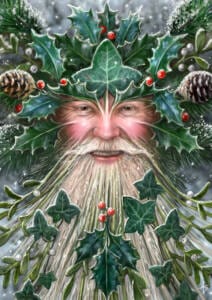
Fresh Greenery:
Holly was the sacred plant of the Romans and their god Saturn. Holly was celebrated in by the week long Roman holiday of Saturnalia (which ended on December 23). The Romans made small wreaths of holly and exchanged them as tokens of friendship.
Holly : Another evergreen of protection, holly’s spiky bristles are believed to repel unwanted spirits. Newborn babies used to be sprinkled with ‘holly water’, water in which holly had been soaked, especially potent if left under a full moon overnight. Holly is sacred to Holle, the Germanic underworld goddess, and symbolizes everlasting life, goodwill and potent life energy. Its red berries represent feminine blood. Together, mistletoe and holly represent the Sacred Marriage at this time of year with the re-birth of the Sun/Son.
Evergreen boughs (and trees), symbolizing the rebirth of nature and vegetation, were brought into the home; it was felt they had some special gift that they could remain green during the cold winter months.
Pine needles (check for edible varieties in your area) can be dried, and then crushed and added to teas, honeys, and breads for the evening, and the season.
The Evergreen.
Evergreens represent everlasting life and were traditionally hung around doorways and windows. Each has a symbolism of its own.
Ivy
Evergreen symbol of immortality and resurrection, growing in a spiral reminding us of reincarnation and rebirth. Sacred to Osiris, where His death and resurrection was a central theme in Egyptian religion. Sacred also to Dionysys, god of vegetation, blossoming and the Return of Spring.
Yew
Tree of regeneration and rebirth as no other – it sends up new trees from its roots and grows to a very great age. It is deeply connected with the spirit realms and the ancestors. Often used as the central ‘world tree’ in ritual spaces and was often planted in graveyards. Very poisonous.
Pine
Its branches bring healing and joy to the home, burning it will purify.
Yule Logs: What we refer to now as the Yule log was traditionally a log made preferably of oak (for the Oak King), but ash, pine or birch were also acceptable. They were decorated with evergreen boughs, berries, or seeds. During the evening, the Yule log was burned. Believing the ashes were mystical, people spread them on fields, in the hopes of encouraging magical fertilization in the spring. A small piece of the log was always saved and used to start the fire the following year.
It was the French who made the delightful confectionery version of the Yule log we know and cherish today!
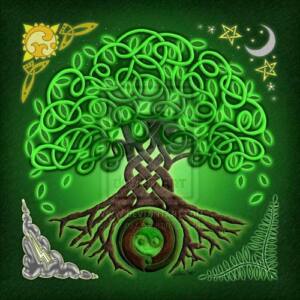
How Old World Traditions Influence Modern Day:
Traditions Many people believe that our current December holidays were based on the existing solstice celebrations. It was far easier to convert people and substitute holidays for those that were used at the same time (a late December event).
Since then, solstice symbols have been incorporated into our current day holidays.
Mistletoe:
Kissing under the mistletoe is based on an old Norse legend. Frigga, the Nordic goddess of love and beauty had a son, Balder, whom she loved dearly. He was a wonderful young god and one the best loved among the other gods. One day, Balder dreamed of dying. His mother was so alarmed, she went to all the birds of the sky and to the plants and animals of the earth and easily extracted from each a promise that they would never harm Balder. Due to these promises, it was well known that Balder could not be hurt in any way. It became great entertainment at the gatherings of the gods to throw things at Balder, knowing full well he could not be injured.
Loki the Trickster was jealous of Balder’s popularity. He pondered on the promises obtained by Frigg and found the loophole of the mistletoe. Since it did not set roots in the ground and was not of the sky, he gathered some of the parasitic mistletoe, and made a dart of its wood. At the next gathering Balder guided the hand of Hoeder (Balder’s blind brother) in a common game. But, the dart of the mistletoe wood from whom a promise had not been given, found its place, and Balder was killed. Frigg cried so hard it is said she turned the red berries of the mistletoe to white. Finally the gods took pity on her and restored Balder to life. The elated Frigg decreed to all that whomever walked beneath the mistletoe should not fight but put down their arms and walk away and a kiss should be given to those who walk under it. Mistletoe etiquette is that for each kiss, a berry was picked. When the berries were gone, so were the kisses. If a maiden refused a kiss, she would remain unmarried for the following year.
Mistletoe: Greatly revered by the Druids, this is the healer and protector. It is carefully cut to ensure it never touches the earth. It’s magical properties are believed to be connected to the fact that it lives between the worlds, between sky/heaven and earth. The white berries of mistletoe represent the fertile white semen of the life-giving male. Which is where kissing under the mistletoe comes from!
Gingerbread:
Ginger was another precious herb unknown to Europeans until it was brought back by the returning crusaders in the early 1100’s. It was an instant hit in Europe! It became a solstice or holiday favorite and was used in teas, gingerbread and as a flavoring for their favorite meals.
On this side of the ocean, some Native American nations felt the longest night should be used for dreaming, and would sip on infusions made of sleep inducing plants. Upon awakening, they found the days getting longer, and stories were exchanged about their dreams and what they could mean to their futures.
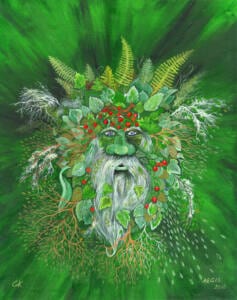
Feasts:
Feasts were a common at solstice bonfires. Common foods included
1. Pork (reminiscent of wild boar hunts common in northern Europe) or other meats. At this time of year, many farmers culled their herds to avoid having to feed them over winter, and their wives harvested and dried all the herbs they could.
2. Fruit Soup was another winter tradition for some groups. Here is a basic recipe that I found to be very forgiving, so add whatever you have in the house:
Fruit Soup Ingredients: Fill a kettle about ½ full with water.
2 cups (or more) of any (or all) dried fruit – prunes, dried apricots, raisins, dried berries, pears, peaches, craisins, etc.
2 cups of fresh apple slices
A finely sliced orange
A finely sliced lemon
2 – 3 cinnamon sticks
12 cloves
(Other spices as you desire but anise flavors don’t work)
Directions
- Put all ingredients in the pan and simmer for 45 – 60 minutes.
- If it is too soupy, you can add ¼ cup of tapioca.
- This can be served either warm or cold.
3. Grains, nuts, berries or other foods of the late harvests.
4. Ginger in the form of gingerbread, cookies or cakes. Other “new” spices to Europe included cinnamon and cloves (among many others) and were also used, when available.
5. In some Celtic cultures, shortbread was served made in round forms representing the sun. The easiest and best recipe I’ve found is one that came over from Sweden with my relatives a couple hundred years ago:
Solstice Cookies Ingredients
1 pound butter
1 cup sugar
4 cups flour
1 teaspoon almond or vanilla extract.
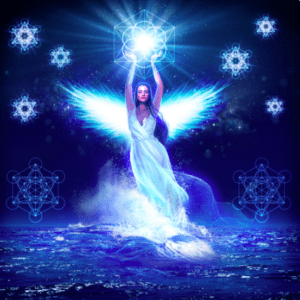
Directions
- Cream butter, sugar and extract together.
- Mix in flour.
- You can use a cookie press or roll into balls and flatten.
- Bake at 350 for about 10 minutes or until a light golden color.
6. Finally, no solstice celebration could be without some sort of mulled drink or a wassail (which means “health”). Some of these were made in an alcoholic base— wines, beer, ale, or mead.
Spices typically used included cinnamon, allspice, cloves, and ginger. If oranges or lemons were available (a sign of wealth) the peels were used. Some people liked the flavor of anise and a star anise could also be added. These were simply mulled or simmered in the beverage. Non-alcoholic versions are also available using apple juice, cranberry juice (a North American native but cousin to the European bilberry), and/or orange juice. When I make this, I put everything in a crockpot and mull it. Mulling spice mixes are available for sale pre-mixed at various places and make it easy! Just add to your beverage. A side benefit is the wonderful way it makes the house smell!
At Samhain we honour, celebrate and welcome the descent into, and return of, the dark – the beginning of the New Year, acknowledging that all beginnings emerge from darkness. At the Winter Solstice we reach the depth of that darkness with the longest night of the year. Darkness has reached its peak.
“Now we start to wonder: will this continue? Will the Earth grow darker and colder as the Sun disappears into the south until only darkness is left? But at Yule a wonderful thing happens. The Sun stops its decline and for a few days it rises in about the same place. This is the crucial time, the cusp between events. The Sun stands still, and everyone waits for the turning.
In our heads we know the light will return. But in the darkness of Winter, can we be sure? do our hearts believe what our heads tell us? Will the light keep its promises? We all have moments of darkness, when we don’t know how much deeper we will go before the light starts to return (or even if it will). The world has moments too; it understands us, and lives as we do.
The Sun does start north again and the light comes back. In the world, in our lives, the light comes back. This is indeed something worth celebrating, and it has been celebrated throughout the Northern Hemisphere in remarkably similar ways.”
The Festival of Rebirth and The Return of the Sun
With the end of the longest night the dark is defeated with the Return of the Sun, the return of light, hope and promise. The Goddess gives birth to the Sun/Sun God. The Sun begins to wax and the days grow longer. All that is hidden will begin to emerge. This is the Sun’s birthday! And it really is time to celebrate!
The Oak King and The Holly King
The Holly King rules over the dark part of the year from Midsummer to Yule, he is God of the Waning Year. At Yule he surrenders his life to the young light Oak King, God of the Waxing Year and his twin, who rules over the light part of the year from Yule to Midsummer. Both rule for half of the year, both fight for the favour and love of the Goddess and both surrender their life force for the well-being of the land. In truth, they are one.(Merayllah Allwood)
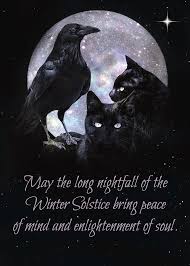
Traditions of Yule
Yule, or Winter Solstice traditions are many and generous, and are shared not only with Christianity with the birthday of the Christ Child, but with many pre-Christian Pagan traditions and indeed more recent ones. It is difficult sometimes to identify their sources, but they are all very familiar in our Western culture even if we don’t recognise the symbology behind them.
The Kissing Bough
At Yuletide it has often been customary to make a decoration using two hoops, one thrust through the other, and bound with evergreens, holly and ivy, and rosy cheeked apples specially reserved for the occasion. Inside, dolls are hung, male and female, with other brightly coloured baubles. At the bottom of the decoration a bunch of mistletoe is carefully tied, and the whole tableau is suspended in the middle of the room, the centre of attention. Every berry on the mistletoe bears the promise of a kiss, and for every kiss given or taken a berry is removed. When all the berries are gone, the kissing has to stop! (Hedingham Fair)
The Wreath
It was traditional to make wreaths from evergreen – the Wheel of Life as evergreen. These were hung on doors or laid horizontally and decorated with candles – later becoming the Christian Advent Wreath
The Yule Tree
Introduced into modern times apparently by the German Prince Albert in Victorian times and we love it. In ancient Rome, pine trees were an essential part of Goddess groves. On the eve of the Midwinter Solstice, Roman priests would cut down a pine tree, decorate it and carry it ceremonially to the temple celebrations. People decked their homes with boughs of evergreen trees and bushes in pots. Pines and firs were cherished as a symbol of rebirth and life in the depth of winter. It was the festival of Saturnalia. Pagan families would bring a live tree into the home so the wood spirits would have a place to keep warm in the cold winter months – food and treats were hung on the branches for the spirits to eat.
Candles
This is the festival of light out of darkness and the tradition of lighting candles is ever popular. Red, green and the gold of the Returning Sun are the colours of Yule. Deck your home and altar with evergreens and candles.
Gift Giving
This is THE Birthday of the Sun/Son! From ancient times the giving and exchanging of gifts has been a vibrant tradition of this festival.
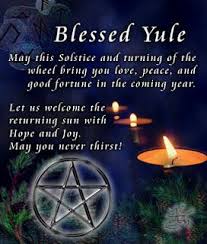
THE WICCAN CALENDAR: YULE (WINTER SOLSTICE)
When is Yule: December 20-23
Yule pronunciation: Yool
Themes: rebirth, quiet introspection, new year, hope, setting intentions, celebration of light
Also known as: Winter Solstice, Midwinter, Alban Arthuan, Saturnalia, Yuletide
In most traditions, Yule is the Sabbat that begins the Wiccan Year. This is the Winter Solstice—the shortest day and longest night we will experience in the Northern Hemisphere. Though it’s typically celebrated on December 21st, the exact moment of the Solstice varies from year to year due to a slight misalignment between the Gregorian calendar and the actual rate of the Earth’s rotation around the Sun. It also occurs at differing local times, so that depending on where you live, it may fall the day before or the day after the date listed on any given calendar. For this reason, a date range of December 20-23 is often cited in sources on the Wheel of the Year.
Yule, a fire festival, is a time of celebrating the return of the light. From this point forward, the days will gradually grow longer again, until we reach the height of the Sun’s power at the Summer Solstice. Although we will still see comparatively little of the the Sun’s light for several more weeks, this Sabbat reminds us to have patience—the waning half of the year is over, and warmth, growth, and light will reign again!
The significance of the Winter Solstice has been recognized for thousands of years, ever since human beings first observed the ever-changing patterns of sunrise and sunset over the course of the seasons. The ancient Romans, Greeks, and Persians all held festivals at this time, many of which celebrated the birth of one or more gods. Of course, the leaders of the early Christian church decided that this was a good time to celebrate the birth of Jesus as well, since one of their strategies for winning converts was to align their holidays with already-existing pagan
In the Wiccan belief system, the God is reborn at Yule, having died at the previous Sabbat (Samhain) at the end of October. The weak quality of sunlight during these still-short days is symbolized by the God in his infancy, just born and needing sustenance before he can come back into his full power. The Goddess, who has been in her Crone aspect these past few months, is now once again in her Mother aspect, having just given birth to the God. She represents the Earth, remaining still and silent for awhile yet as she rests from her labor.
This is a celebration of the renewal of life, but compared to other Sabbats it is a relatively quiet, indoor holiday, as people gather within the warm shelters of their homes to be merry and give thanks. As a Yule ritual, many Wiccans decorate their altars with evergreen branches, such as cedar, pine, hemlock and spruce, as well as bright sprigs of holly, pinecones, and other festive winter flora.
Candles are paramount to this Sabbat, of course, with Yule traditions emphasizing the colors red, green, white, and gold. Images of the Sun are also appropriate. Those lucky enough to have a fireplace can burn a sacred Yule log, but you don’t need an actual hearth to brighten up your home with candles galore! Interestingly, many traditions which are generally thought of as belonging to Christmas—including the Yule log, a decorated tree, wreaths, and even caroling—are actually rooted in pre-Christian pagan traditions. So it’s quite likely that you’ve already been celebrating Yule for years, with or without your knowledge!
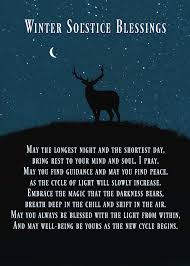
Buttermilk Bread Charm for Yule.
You will need:
3 mugs of strong white flour
500 ml of Buttermilk (available from the supermarket)
I teaspoonful of bicarbonate of soda
Yule ribbon in red & green or gold
4 dessertspoons of honey
3 dessertspoons of golden syrup
4 dessertspoons of mixed peel
3/4 cup of mixed dried fruit
3 pieces of ginger, roughly chopped (the type you get in syrup)
chopped walnuts and rich brown sugar for sprinkling
Place the flours in a large bowl. Make a well in the centre. Sieve in the blended salt and soda and pour in the buttermilk. Mix well all the remaining ingredients with a wooden spoon until the dough feels springy. You can add some of the preserved ginger syrup for extra stickyness and zing) If it feels too sloppy just add a little more flour. Turn it onto a board and cover with a fine dusting of flour. Pat it with your hands until you have a round shape. Take a sharp knife and score lightly into eight sections, one for each festival. Brush with milk and sprinkle with nuts and sugar.
Place onto a greased baking tray and pop your buttermilk bread into a moderate oven for about 20-25 minutes. Keep an eye on it. When the bread is ready it will change colour and it will sound hollow when you tap the bottom. Cool completely on a wire rack. When it is cool, tie it with Yule ribbon.
Take time to concentrate on the bread you have created and turn the loaf three times saying “From the fields and through the stones, into fire, Yule Bread, as the Wheel turns may all be fed. Goddess Bless.”
Now take your bread and share it with your family and friends and pass on the generous blessings of this festival of Rebirth! Eat it fresh, as soon as it is made if you can.
Recipe donated by the Counter Enchantress. Adapted by the Boss Lady with permission.
The Counter Enchantress is discovering that you can add almost anything appropriate to this simple bread recipe and it STILL WORKS beautifully. You can decide for yourself what the appropriate additions are for a particular festival, and just do it. There is much kitchen magic in working with one recipe through the Wheel of the Year just changing it a little as the wheel turns…..
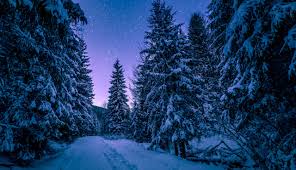
Yuletide Charm
You need:
One wooden spoon
Thin red and green, or gold ribbon
Take the spoon in your right hand and say ‘Brightest blessings on this Yuletide Fare, give Love and Peace in equal share’. Tie the ribbon in a bow around the neck of the spoon and say ‘with Yuletide Warmth my Hearth be blessed, That lifts the Heart of Kin and Guest’.
Take your charm and place it in a suitable place in your kitchen. This charm can be extended in many ways, for example by tying a pouch of cinnamon together with the ribbon. Brilliant small gift – and you can do it yourself!
The Spirit of Yule
Above all, Yuletide is a Celebration of the Return of the Light, the promise fulfilled of Light birthing out of Darkness.
It is a time to share Love and Celebrate with our community of Family and Friends.

And the wheel turns
The Winter Solstice sunset at Stonehenge is, alongside the Summer Solstice sunrise, its defining alignment. For thousands of years it has been witnessed and celebrated by the countless pilgrims who have trekked to the unique monument. The story of Stonehenge is part of the vaster epic of the sun.
As we prepare to exhale that full breath on December 21, Winter Solstice, we are at the place to begin to dream about the coming year and what we would like to create.
